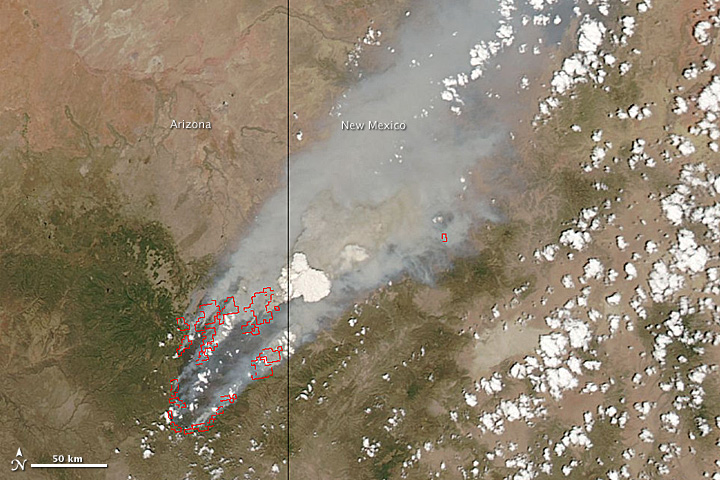
Kate decides to rattle my cage:
Marc:I reply:
I noticed you had mention of the big fire in AZ on your website—I don’t know if you’ve seen these images, but I thought they were impressive.
Hi Kate:
I’ve been hiding my head under the pillow trying to avoid news of this fire. The reason is that it’s so big and so fast-moving, and there’s just about nothing that will stop it. It’s almost burned it’s way completely through the forest, into the juniper woodland and grassland on the other side, in the Little Colorado River Valley. The fire might slow down, just because there will be less vegetation. On the other hand, maybe it won’t: maybe it’ll just burn all the way across New Mexico too!
Arizona forests are unusually vulnerable to these fires, not only because lots of people are present in these forests, and because it is so dry, and so windy, but because unusual conditions in the spring of 1919 created an unusually-dense undergrowth for a ponderosa pine forest. In that fateful spring, favorable weather and lots of rain and snow permitted every seedling to sprout. EVERY seedling!
Ninety years later, you can still track where each and every pine cone hit the forest floor that spring of 1919, because dense clusters of teensy-weensy 90-year-old trees no bigger round than your wrist are everywhere in the forest. The Forest Service never had enough money or incentive to clear out tens of thousands of square miles of these clusters. So, Arizona forests are sitting ducks for fires. I’m pretty pessimistic: perhaps in the long run, ponderosa pine forests along the Mogollon Rim are incompatible with civilization.
Scary pictures!


No comments:
Post a Comment